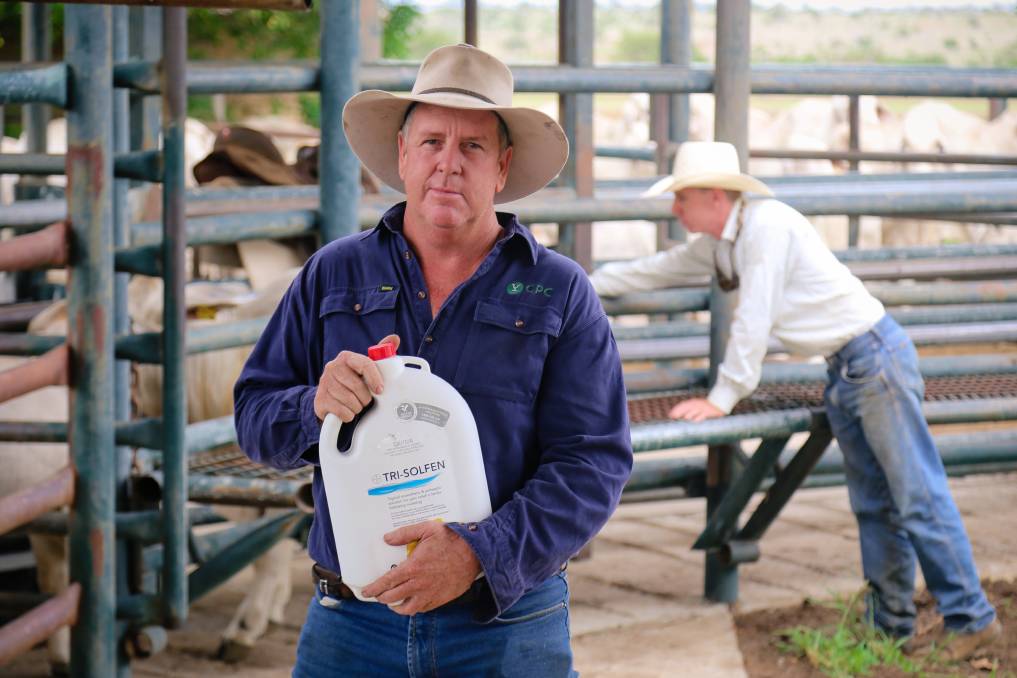Developed in Australia as a pain relief treatment for common animal husband practices including dehorning and castration, Tri-Solfen contains two topical anaesthetics: lignocaine and bupivacaine, as well as adrenaline and cetramide, mixed in a distinctive blue gel. Tri-Solfen is applied directly to the nose and feet using a specially designed applicator gun, creating a lasting barrier over the lesions, numbing the pain, reducing infection and encouraging healing.
Prof Windsor said the acidic pH (around 2.7) coming from the antiseptic cetramide in the formulation also helped kill off the FMD virus. “The anti-bacterial properties in Tri-Solfen cleverly avoid the need for other treatments, including antibiotics and anti-inflammatories,” Prof Windsor said. “Furthermore, lignocaine and bupivacaine, combined with adrenalin, provide rapid and prolonged pain relief and alleviate the initial sting from applying such an acidic product. This pain-free effect is estimated to last over 24 hours and is sufficient to kill or reduce the virus load without causing pain to the animal.”
Prof Windsor said conclusive clinical trials in both the Laos and the Cameroon showed Tri-Solfen resulted in much faster healing of lesions caused by FMD. “Lesions in Tri-Solfen treated cattle with FMD significantly reduced in size and almost entirely disappeared in less than 10 days, without returning for a full two weeks after the initial infection,” Prof Windsor said. “As a consequence, these animals recovered their mobility without being lame and started eating almost immediately after treatment, suggesting this is a beneficial therapy to enable cattle to walk and gain access to water and feed.”
Prof Windsor said in contrast, while animals treated with oxytetracycline in the Cameron study also managed to heal most of their lesions, these tended to re-appear after two weeks, most likely from the onset of secondary infections, with some animals were still lame and struggling to walk after 15 days of symptoms.
“In an even worse situation, untreated animals had lesions that persisted and continued to enlarge for over two weeks, suggesting that healing was severely compromised and delayed,” Prof Windsor said. “Not surprisingly, these animals remained in pain and had poor appetite while they were sick, leading to profound loss of body condition. Some animals simply refused to move, and those that managed to walk were lame and struggling.”
Prof Windsor said importantly, Tri-Solfen product did not cost any more than the antibiotics or anti-inflammatories that it may replace, nor did it come with a warning of antimicrobial resistance or the presence of residues in the food chain. “Tri-Solfen treatment for FMD may change the way farmers treat infected cattle, shifting from expensive and inappropriate antibiotics to a solution that improves animal welfare and encourages farmers to report outbreaks,” he said. “As Tri-Solfen may increase the chances of farmers reporting outbreaks to obtain treatment of their animals, this assists disease surveillance and enables future vaccination delivery through extension advice.
“These observations indicate the huge potential of Tri-Solfen in having a profoundly positive impact on the health and welfare of livestock-owning families and their animals in the future. Of course animal health staff also need to maintain a focus on good hygiene practices to limit transmission from infected to uninfected animals. If made available for purchase and administration by farmers, this product provides a viable alternative approach for treating foot and mouth disease and in addition to vaccination and improved biosecurity, may assist disease control in Asian and African countries and other developing countries globally.”

